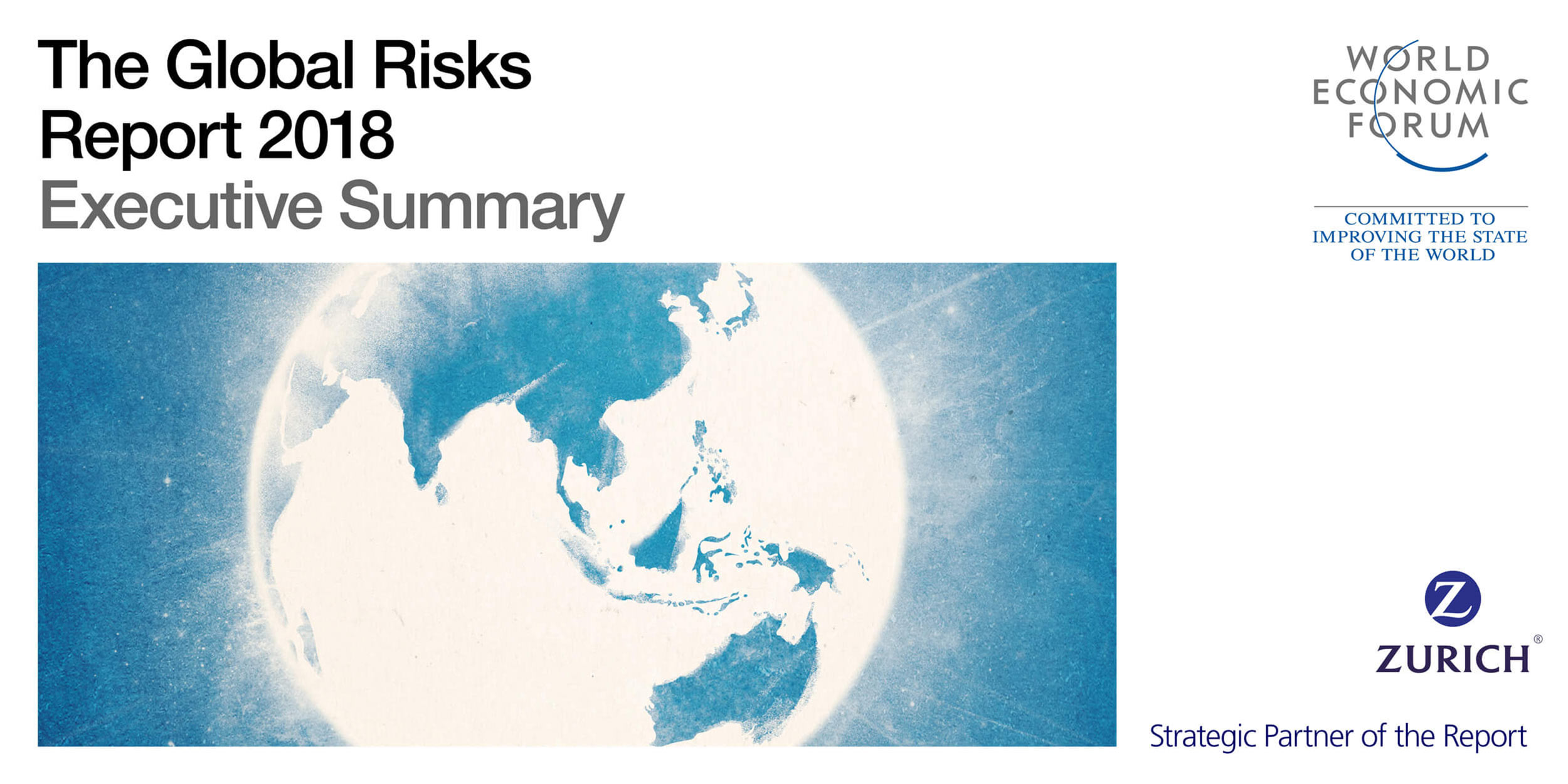How businesses can manage global risks 2018
Global risksArticleJanuary 17, 2018
One year on, a global economic recovery is under way, offering new opportunities for progress. What are the new challenges and risks that could arise in the global risks landscape?
Download the full Report and Executive Summary here:
Last year’s Global Risks Report was published at a time of heightened global uncertainty and strengthening popular discontent with the existing political and economic order. The report called for “fundamental reforms to market capitalism” and a rebuilding of solidarity within and between countries.
One year on, a global economic recovery is under way, offering new opportunities for progress that should not be squandered: the urgency of facing up to systemic challenges has, if anything, intensified amid proliferating indications of uncertainty, instability and fragility.
Although the management of conventional risks are progressively improving, more attention is needed in dealing with complex risks in the interconnected systems that underpin our world, such as organizations, economies, societies and the environment. There are signs of strain in many of these systems: our accelerating pace of change is testing the absorptive capacities of institutions, communities and individuals. When risk cascades through a complex system, the danger is not of incremental damage but of “runaway collapse” or an abrupt transition to a new, suboptimal status quo.
As in previous years, the Report is based on the annual Global Risks Perception Survey, completed by 900 members of the World Economic Forum’s global multi-stakeholder community. Respondents are drawn from business, academia, civil society and the public.
Key highlights from the survey
- Environmental risks have grown in prominence in recent years. This trend has continued this year, with all five risks in the environmental category being ranked higher than average for both likelihood and impact over a 10-year horizon.
- Cybersecurity risks are also growing, both in their prevalence and in their disruptive potential. Attacks against businesses have almost doubled in five years, and incidents that would once have been considered extraordinary are becoming more and more commonplace.
- Headline economic indicators suggest the world is finally getting back on track after the global crisis that erupted 10 years ago, but this upbeat picture masks continuing underlying concerns. The global economy faces a mix of long-standing vulnerabilities and newer threats that have emerged or evolved in the years since the crisis.
- The world has moved into a new and unsettling geopolitical phase. Multilateral rules-based approaches have been fraying. Re-establishing the state as the primary locus of power and legitimacy has become an increasingly attractive strategy for many countries, but one that leaves many smaller states squeezed as the geopolitical sands shift.
This year’s Global Risks Report also introduces three new series: Future Shocks, Hindsight and Risk Reassessment. The aim of which is to broaden the report’s analytical reach: each of these elements provides a new lens through which to view the increasingly complex world of global risks.
How can businesses respond to these global risks?
The increased interconnectivity, complexity and potential impact of global risks are here to stay. In such a context, caring for business and our future means considering everything that could affect it. Companies need to look at those global risks that could have a direct or indirect impact on their business, and define a holistic approach to managing those risks.
Managing the connectivity of risks is a recipe of success for the future of risk management. A future that s not only based on risk transfer, but also – and more and more – includes greater oversight of the strategic risks and risk management approaches that are integrated to address the risk connectivity, and that are backed up by top-quality data insights and intelligence. Responding to global risks needs to start at the highest level in companies. This means integrating risk management into the strategic planning process of the corporation.
For that, it is important to understand the triggers, trends and scenarios to look out for, and to prepare for the possible consequences.






